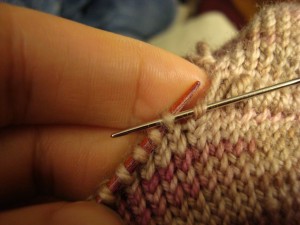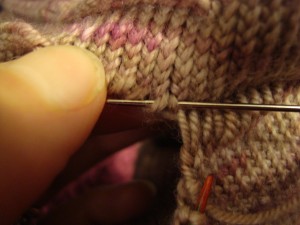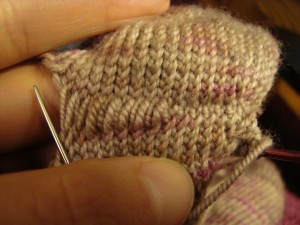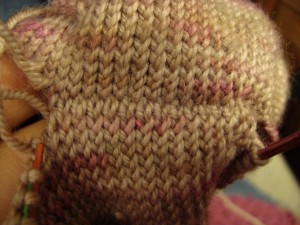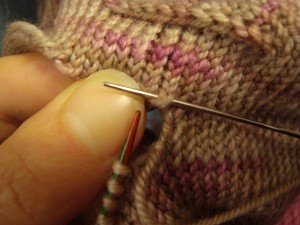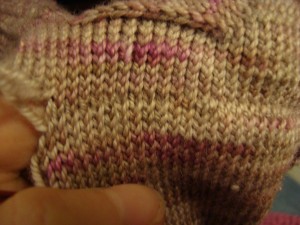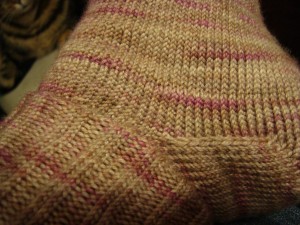Sat 20 Feb 2010
I never begin a project expecting to fail. There are some cases, though, where I know I’m taking a calculated risk.
With the sock surgery, I knew that it could end up being impossible to graft the two halves back together, and that I might have to reknit the heel. Since I’d have to do that either way, I figured that it was worth it to try a new technique, at the possible cost of an extra end to weave in and a few hours of poking around with the grafting.
Knowledge of this risk might be why I am so inordinately pleased that it worked. I didn’t expect it to fail, but I’d have put the odds at a little better than 50/50 that it would work out.
I started out with simple grafting. I put the yarn through two of the live stitches on the needle.
Then, I passed it through one leg of each stitch on the first row of the heel section.
I left the stitches loose until I had done quite a few in a row, then went back and tightened them up.
This gave me a join that was offset by half a stitch.
I thought I might be able to do better than that. So, instead of passing the needle through the legs of two stitches, I passed it behind both legs of a single stitch.
Which makes much more sense, really, because this is what the yarn was doing in the row that I pulled out to split the two halves of the sock; one loop wrapping around the two legs of the stitch in the next row. This gave me a much better join.
Honestly, I’m not sure that I could even point out which row was grafted, without examining very, very closely.
For a surgery with 50/50 chances, I’d say it turned out pretty well.
